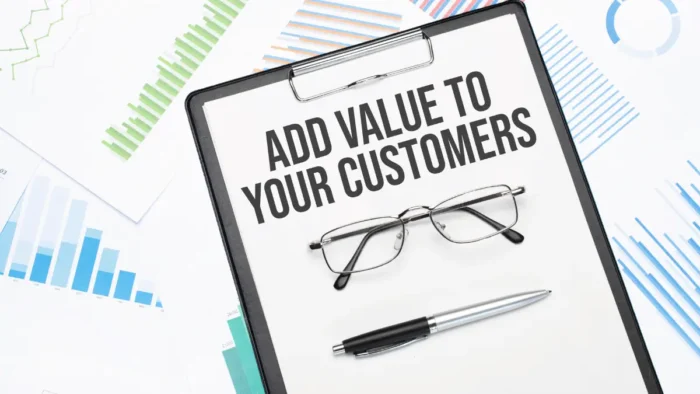The optimization of your procurement process is absolutely necessary in order to keep your operations running efficiently and successfully manage your costs. It requires a series of processes, beginning with the identification of needs and ending with the payment of those needs, all of which require careful attention to detail and strategic planning. A great number of businesses are turning to new solutions in order to improve their productivity and cut down on errors as they work to streamline these operations.
One such innovation is procure to pay systems, which are specific platforms that offer a comprehensive solution for managing the whole procurement cycle, facilitating easier tracking and processing from start to finish. Implementing these systems can significantly improve your procurement strategy, but it’s only one piece of the puzzle. To optimize your procurement process, you must focus on several key areas.
Read on to discover how to transform your procurement from approval to payment, enhancing efficiency and managing costs more effectively.
Streamlining Approval Processes
Optimizing approval processes is a cornerstone for enhancing procurement efficiency. Organizations can expedite their operations by refining these workflows, ensuring swift progression from approval to execution. This initiative reduces lead times and fosters a more dynamic decision-making environment.
To strengthen your approval process, consider the following strategies:
- Implement digital tools for faster document review and approval: Introducing digital platforms facilitates real-time sharing and reviewing of documents. This approach dramatically reduces the turnaround time for approvals, enabling quicker responses to procurement requests.
- Set clear thresholds for different levels of expenditure approval: Establishing predefined spending limits helps effectively delegate authority. This structure ensures that decisions are made promptly at the appropriate levels without unnecessary escalations that can delay the process.
- Approval workflows should be reviewed and adjusted regularly to avoid inefficiencies. Through continuous assessment, it is possible to identify and eliminate bottlenecks in the approval workflow. To establish an agile and responsive procurement system, it is essential to modify processes to adapt to changing business requirements or simplify operations.
A refined approval process is instrumental in achieving timely decision-making and enhancing the pace of project completion. Your company can achieve a more efficient and effective procurement cycle by addressing potential delays head-on and implementing a proactive approach to process optimization.
Implementing Effective Negotiation Strategies
Mastering negotiation tactics is essential for securing advantageous terms in procurement. Effective negotiation ensures cost savings and strengthens supplier relationships, contributing to a more resilient supply chain.
To hone your negotiation skills, consider these steps:
- Prepare thoroughly before negotiations, understanding your leverage: Deep dive into market trends, competitor analysis, and procurement history to identify negotiation levers. This preparation ensures you’re well-informed about what you can ask for and what you might receive in return.
- Aim for mutually beneficial agreements, not just short-term wins: Focus on crafting deals that offer value to both parties. This approach fosters a spirit of partnership rather than competition, paving the way for better collaboration and future negotiations.
- Keep the lines of communication open and cultivate good relationships with your suppliers: Have an open and honest conversation with them. This will facilitate the quick resolution of issues and the strengthening of trust, both of which are essential for the development of long-term partnerships.
Effective negotiation is about establishing a foundation for ongoing collaboration and mutual growth. By approaching negotiations with a well-prepared, partnership-oriented mindset, you can create agreements that benefit your organization today and in the future.
Leveraging Technology for Efficiency

Technology drives efficiency and accuracy in the modern procurement landscape. By embracing the latest tech solutions, organizations can automate mundane tasks, streamline data analysis, and enhance overall process speed. This strategic approach saves you valuable time and helps you reduce the risk of possible human errors, leading to more reliable outcomes.
To fully embrace technology’s potential for your procurement process, consider these strategies:
- Utilize procurement software for better data management and analysis: Advanced software solutions offer powerful tools for tracking spending, managing supplier information, and analyzing procurement trends. In such a way, it enables more informed decision-making and helps identify cost savings and efficiency improvement opportunities.
- Automate routine and repeatable tasks to save time and reduce human error: Deploying automation for repetitive tasks such as order processing, invoice matching, and payment scheduling frees staff to focus on more strategic aspects of procurement. Automation also will minimize the risk of errors that can lead to more delays and some additional costs.
- Adopt electronic payment systems for faster and more secure transactions: Electronic payments streamline the procurement process by facilitating faster transactions and reducing paperwork. These systems will accelerate the payment cycle and improve security, while reducing the risk of fraud and errors.
Integrating technology into procurement processes is a strategic move to enhance efficiency, accuracy, and security. By carefully selecting and implementing the right technological tools, organizations can achieve a more streamlined, cost-effective, reliable, and adaptable procurement cycle for future advancements.
Conclusion
Integrating strategic approaches from streamlined approvals and effective negotiations to leveraging cutting-edge technology is invaluable in optimizing procurement processes. Each step enhances operational efficiency, fosters stronger supplier relationships, and drives cost-effectiveness. As organizations embrace these multifaceted strategies, they pave the way for a more agile, responsive, and resilient procurement system.





